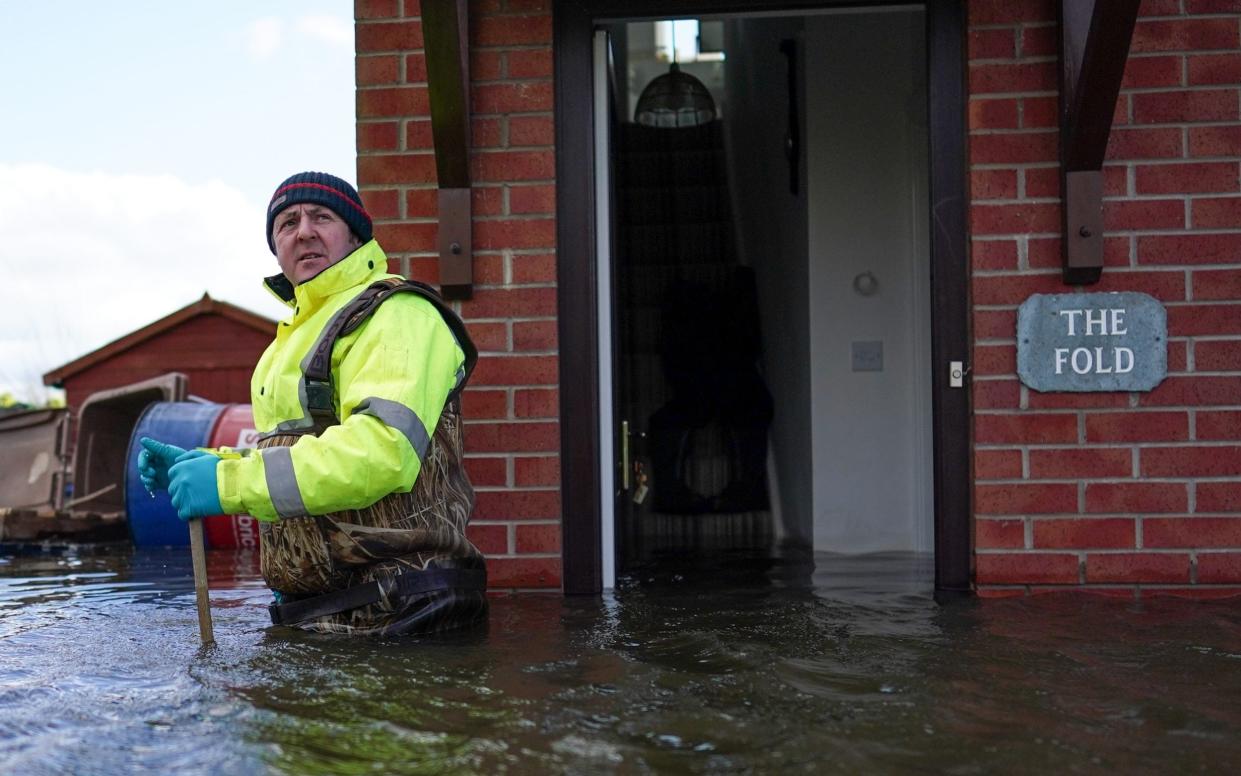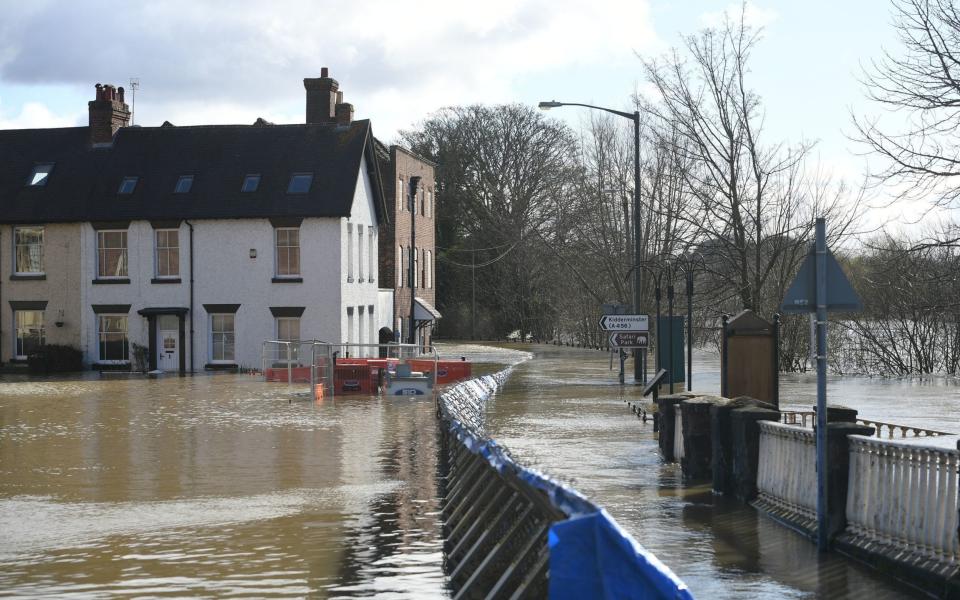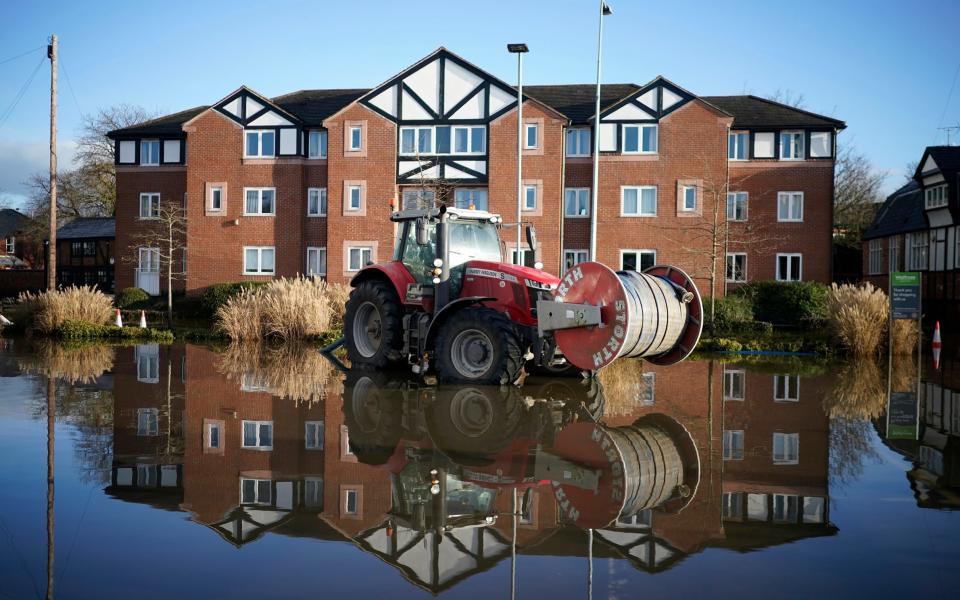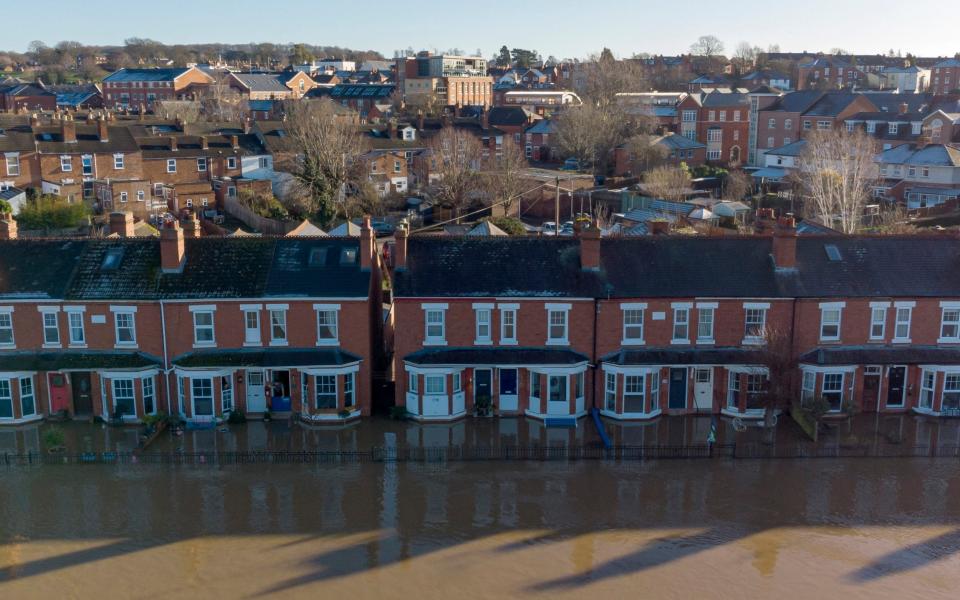Developers to be banned from building on land in danger of flooding

Developers are to be blocked from building on land at risk of flooding, with the Environment Secretary warning that climate change is heightening the threat of deluges destroying homes.
On Thursday, the Government will set out plans to channel £860 million into 1,000 flood defence schemes this year as part of a package of measures to better protect households, business premises and infrastructure.
Improvements to flood insurance will also be announced in an effort to encourage the installation of flood doors, air brick covers and flood-resistant paint in homes previously hit by water damage.
The move comes amid growing fears in Whitehall about climate change and the need for the nation to adapt urgently to the challenges it poses.
Writing for The Telegraph on Thursday, George Eustice warned: "Climate changes means more extreme weather, a higher risk of flooding events and coastal erosion. All too often, we are seeing households suffering repeated flooding."
He said the Government would consult in the autumn on how to help frequently flooded communities, including with more funding. Better surface water maps will be published by next summer in order to give 3.3 million people more information on local risks, he added.
New powers will also be given to the Housing Secretary to block "inappropriate development" on land threatened by flooding.
The Government is introducing the reforms after 866 homes were granted planning permission in 2019/20 despite formal warnings from the Environment Agency (EA) about flood risk.
Mr Eustice revealed that new guidance would be issued to "drive up compliance" with flood advice by forcing local planning authorities to refer decisions to Robert Jenrick, the Housing Secretary, in cases in which the EA has raised an objection on those grounds.
His announcement came after heavy rain, lightning and hail "the size of garden peas" caused havoc across the country this week, with the Met Office predicting that the stormy weather will continue.
The six-year state programme to boost flood prevention schemes and coastal defences aims to help better fortify 336,000 properties, slashing the national flood risk by up to 11 per cent and preventing £32 billion in wider economic harm caused by water damage.
Last year, the Government announced it would double capital funding for flood and coastal defences for the programme, which runs until 2027, to a record £5.2 billion.
Details of how the first tranche of cash, worth £860 million, is to be spent will be published on Thursday.
Funding will be injected into projects to boost river walls and embankments, create new wetlands, peatlands and woods and reduce the flow of rainwater upstream into rivers at risk of flooding. Towns in Greater Manchester, Hebden Bridge, in West Yorkshire, and Weardale, in County Durham, are among areas set to benefit.
The plan will also outline funding for the annual beach nourishment scheme and repairs to the hard sea defences along 26 miles of coastline in Lincolnshire to reduce the risk of tidal flooding to 30,000 homes and businesses, 19,000 static caravans, and 35,000 hectares of land.
Properties need to be much more resilient to flooding
By Environment Secretary, George Eustice
In recent weeks, we have seen images of catastrophic flash flooding in Germany, Belgium, China and India. Closer to home, last weekend heavy downpours lead to significant surface water in areas like London and earlier this year, Storm Christoph caused significant damage to homes, businesses and communities. My thoughts are with all of those affected by these devastating events.
Climate change means more extreme weather, a higher risk of flooding events and coastal erosion. All too often, we are seeing households suffering repeated flooding – something I am determined to tackle. Following our recent call for evidence to look at better protecting and better preparing our communities, we will be consulting this autumn on ways to strengthen the assessment of local circumstances when allocating funding. This will include looking at ways to ensure that our flood defence investment programme can further benefit frequently flooded communities.
We have already made progress. Between 2015 and March this year, the Government invested £2.6 billion into flood defences. This has led more than 300,000 home being better protected. In areas like the Calder Valley, this has made a huge difference. Areas that were damaged by previous bad weather were spared this year, thanks to this investment.
But there is more to do. Over the next six years, we are doubling the amount of money invested to £5.2 billion. On Thursday, I am announcing that 1,000 flood schemes across England will receive over £860 million in 2021/22 for building conventional walls and embankments, improving flood water storage, and harnessing the power of nature to slow the flow of water and reduce risk.
This is part of our Flood and Coastal Erosion Risk Management Investment Plan for 2021 to 2027, which sets out how new flood and coastal schemes will better protect 336,000 properties by 2027, helping to avoid £32 billion in wider economic damages and reducing the national flood risk by up to 11 per cent.



We also need to make our properties much more resilient to flooding. We aim to change the government-backed flood insurance scheme, Flood Re, next year so that when a property backed by Flood Re is flooded, they can claim additional payments to make the property more flood-resilient, for example to install flood doors and air brick covers, and use flood resistant paint.
Our plans also include measures to tackle the risks from surface water flooding, the kind that we have seen in London recently. Better surface water maps will be published by summer 2022, with 3.3 million people having more information on their risks.
We must also ensure that we are not storing up problems for ourselves in the future. In most cases the Environment Agency’s advice to planners on flooding is followed well, but in 2019-20 there were still 866 homes granted planning permission contrary to their advice.
Alongside Robert Jenrick, the Communities Secretary, I am announcing that new guidance will be issued to drive up compliance with planning rules to ensure that local planning authorities refer planning decisions to ministers when the Environment Agency is sustaining an objection on flood risk so inappropriate development is guided away from flood risk areas.
These are just some of the steps we are taking in our comprehensive plans, all designed to give us the best chance of adapting to climate change. It is important that we take action right across the system.
This year will see an extra £250 million spent on flood and coastal defences compared with last year – the highest ever annual investment. It includes an extra £40 million compared with last year for schemes in Yorkshire and the Humber, a region that has suffered from repeated flooding in recent years, and an extra £53 million for the North West, the region which was hit hardest by Storm Christoph this winter.
We will sadly never save every home or business from the effects of flooding, but it is my sincere hope that many more can be protected in the years ahead.

 Yahoo News
Yahoo News 
